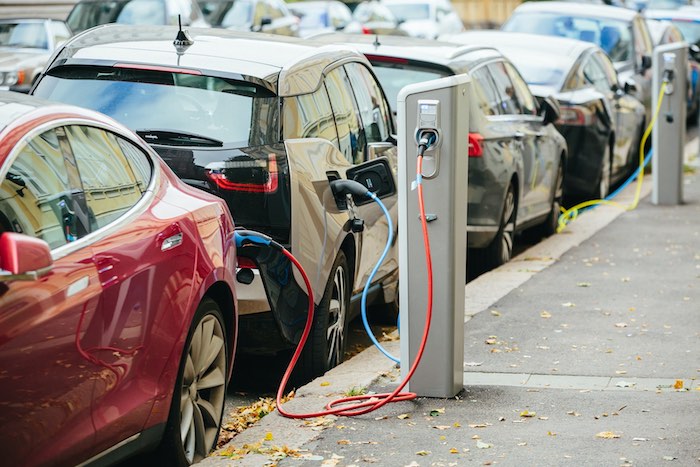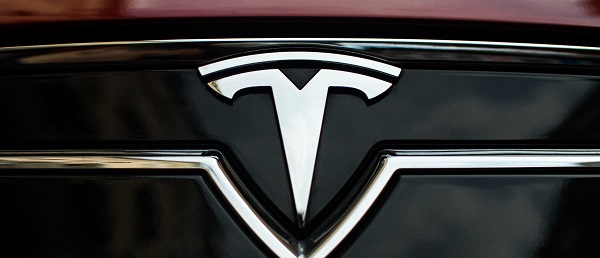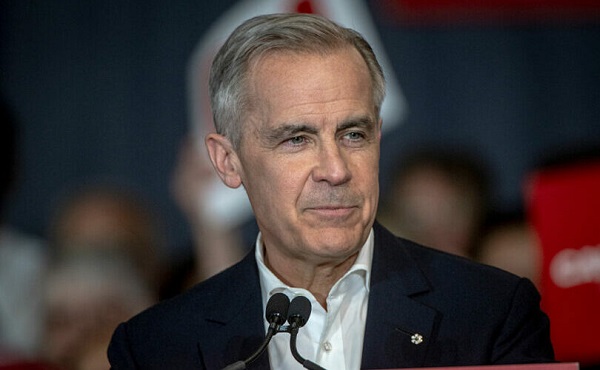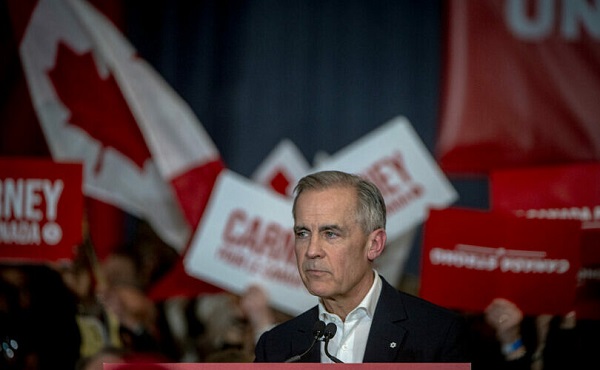Automotive
Lithium Prices: What They Tell Us About the Popularity of Electric Vehicles

From EnergyNow Media
By Jim Warren
The online database, Trading Economics, indicates that in June 2023 the global price for lithium had risen to $59,212 per tonne. But by November it had fallen by more than half to $27,218. Prices have continued to plummet. As of December 31, lithium was selling for just $18,242 per tonne.
How could this be? Electric vehicle (EV) mandates established in many rich developed countries over the past few years had analysts predicting that if targets were actually met, the world would need 388 new lithium mines by 2035. A Fraser Institute study suggests that getting enough mines built to satisfy all the mandates will be a problem. It takes from seven to ten years to get a mine financed, approved and built.
Canada’s Environment Minister, Steven Guilbeault is certainly trying to drive up demand for lithium. The federal government’s Zero Emissions Vehicle Standard insists that by 2030, 20% of all new passenger cars, SUVs and light trucks sold in Canada must be greenhouse gas emissions free. New battery plants are being handsomely subsidized in Canada to power all of the new electric cars that will presumably be required. With similarly aggressive mandates in Europe and US states led by California there should be heavy demand for lots of batteries and a mountain of lithium.
The most likely explanation for collapsing lithium prices is US consumers’ reluctance to embrace electric vehicles. The Economist reports that EVs accounted for just 8% of new vehicle sales in America this past year. GM was only able to sell 20,000 EVs, but it did manage to sell over half a million fossil-fueled vehicles. Disappointing demand for EVs prompted GM to shelve plans to spend $4 bn to convert one of its plants to electric pickup truck production. Ford has similarly lost enthusiasm for EVs. This past fall it decided to delay plans to invest $12bn in EV production. Companies that make lithium batteries for EVs have responded accordingly. This past fall battery plants in Georgia and Michigan laid off hundreds of employees. Fewer batteries translated into less demand for lithium.
It would appear that EV adoption goals established under Joe Biden’s eye-wateringly expensive green transition initiative (disguised as the “Inflation Reduction Act,”) are not being met. The Biden plan offers tax credits of up to $7,500 for people who purchase EVs. However that hasn’t been a sufficient sweetener. The average EV sold in the US has a $52,000 price tag and that doesn’t account for additional costs like wiring a home charging set up. California, Florida and Texas account for over half of US EV sales and are also responsible for high average sticker prices. Ostensibly virtuous EV buyers in the US have a bit of hypocrisy going on. They’ll happily drive EVs as long as they are full size SUVs. Batteries are heavy which makes EVs heavier than gas and diesel fueled vehicles. And, electric SUVs are especially heavy—heavy enough to increase the chances of deadly collisions. Tesla has apparently created a super-sized SUV, designed for wealthy California drivers, that makes the Hummer look like a toy. And, because they are extra heavy, driving them uses more electricity and it takes extra energy and materials to build them. Furthermore, given that fossil fuels still account for 60% of the electricity generated in the US, EVs are less environmentally friendly than advertised. They are far from being “emissions free.”
EVs are indeed more popular in Europe and China. In Europe 1.5 million EVs were sold this past year and 3.5 million were sold in China. The models sold in China are small, zippy units that don’t weigh much. However, like in the US, around 60% of the electricity consumed in China is generated by burning fossil fuels (mostly coal).
Despite having a copycat EV mandate that mirrors those in Europe, Canadian sales have been even less stellar than what the US has been able to achieve. In 2021, EVs accounted for just 5.3% of new car sales in Canada. Most of them were sold in Ontario, BC and Quebec (55,229) which makes sense—those are the provinces where most Canadians and most climate-alarmed Canadians live. In all the rest of Canada just 7,301 electric vehicles were purchased.
Clearly, the adoption of electric vehicles has failed to meet the overly ambitious targets set by environmentally-friendly policy makers. This result lines up with the litany of missteps and missed targets that have plagued green transition projects over the past two years. The failures include the big decline in demand for new solar and wind power projects and the reversal of greenhouse gas emissions reduction projects in the UK and Europe. An issue this could raise for us in Canada is that Steven Guilbeault might see the international data and worry that his transition plans need to be beefed-up. He could make them even more onerous, expensive and ludicrous.
Automotive
Tesla Vandals Keep Running Into The Same Problem … Cameras


From the Daily Caller News Foundation
By Hudson Crozier
People damaging Teslas in anger toward their owners and Elon Musk aren’t picking up on the fact that the vehicles have multiple cameras capable of catching them in the act.
At least nine perpetrators have been caught on video keying, writing graffiti or otherwise defacing Tesla vehicles in parking lots across the U.S. in the month of March alone. Most have led to an arrest or warrant based partly on the footage, which Tesla’s “Sentry Mode” automatically films from the side of the unattended vehicle when it detects human activity nearby.
“Smile, you’re on camera,” Tesla warned in a March 20 X post about its Sentry Mode feature. Musk’s company has been working to upgrade Sentry Mode so that the vehicles will soon blast music at full volume when vandals attack it. The camera system, however, has not stopped an increasing number of vandals from singling out Tesla owners, usually in protest of Musk’s work in the Trump administration for the Department of Government Efficiency (DOGE).
One incident happened on March 29, the same day leftists coordinated protests around the country for a “Global Day of Action” against Musk. That Saturday also saw alleged instances of violence at protests. The demonstrations stemmed from an online call to action by groups such as the Disruption Project, which encourages activists to foment “uprisings,” find a “target’s” home address and other confrontational tactics.
Tesla’s press team did not respond to a request for comment.
One man allegedly caught on camera keying a Tesla SUV on March 24 apologized to the owner who confronted him in a parking lot in Pennsylvania, police and media reports said. The man faces charges of criminal mischief, harassment and disorderly conduct for allegedly carving a swastika onto the vehicle.
“I have nothing against your car, and I have nothing against you,” the suspect said while the owner filmed him in the parking lot. “Obviously, I have something against Elon Musk.” The man called his own behavior “misguided.”
The defendant’s lawyer told Fox News his “client is a proud father, long-time resident, and is currently undergoing cancer treatment” and that he would not comment publicly “pending the outcome of the case.”
One of the most aggressive acts caught by Sentry Mode was in the case of a man who drove an ATV-style vehicle into a Tesla on March 25. Texas police identified the man as Demarqeyun Marquize Cox, arrested him and said he allegedly gave two other nearby Teslas the same treatment while also writing “Elon” on them. The public defender office representing Cox did not respond to a voicemail from the Daily Caller News Foundation.
Tesla cameras also caught three other people in Florida, Texas and Arizona keying and smearing bubble gum on the vehicles in March. The three suspects named by police do not have attorneys listed in county records available for contact.
Many of the vandalism cases since Trump’s return have reportedly caused thousands of dollars in damage for individual owners. For example, the bubble gum incident in Florida brought $2,623.66 in costs, while another keying incident in Minnesota brought $3,200.
Some reported attacks on Tesla vehicles and chargers have gotten the attention of federal law enforcement, including cases of alleged firebombing or shooting.
Two other suspected vandals in New York, one in Minnesota and one in Mississippi have reportedly avoided arrest for now — with one owner declining to press charges — but were all seen on the Teslas’ cameras scratching up the vehicles. Police identified the Mississippi suspect as an illegal migrant from Cuba.
One Tesla owner in North Dakota ridiculed a man who allegedly carved the letter “F” into his Cybertruck in a Costco parking lot — as seen on the Cybertruck’s camera. The defendant faces charges of criminal mischief, and county records say he is representing himself in court.
“I can’t believe this guy is potentially ruining his life to follow a political ideology,” the owner told WDAY News.
“If you’re going to vandalize these vehicles, you’re going to get caught,” the owner said.
Automotive
Dark Web Tesla Doxxers Used Widely-Popular Parking App Data To Find Targets, Analysis Shows


From the Daily Caller News Foundation
By Thomas English
A dark web doxxing website targeting Tesla owners and allies of Elon Musk appears to be compiled from hacked data originally stolen from a massive ParkMobile app breach in 2021, according to records obtained by a data privacy group.
The site, known as DogeQuest, first appeared in March and publishes names, home addresses, contact details and other personal information tied to Tesla drivers and DOGE staff. Marketed as a hub for anti-Musk “creative expressions of protest,” the platform has been linked to real-world vandalism and remains live on the dark web. Federal investigations into DogeQuest are already underway, the New York Post first reported.
“If you’re on the hunt for a Tesla to unleash your artistic flair with a spray can, just step outside — no map needed! At DOGEQUEST, we believe in empowering creative expressions of protest that you can execute from the comfort of your own home,” the surface-web DogeQuest site reads. “DOGEQUEST neither endorses nor condemns any actions.”

A screenshot of the DogeQuest surface website captured on April 3, 2025. (Captured by Thomas English/Daily Caller News Foundation)
ObscureIQ, a data privacy group, compiled a breakdown of the data — obtained by the Daily Caller News Foundation — and determined 98.2% of records used to populate the site matched individuals affected by the 2021 ParkMobile breach.
Encouraging destruction of Teslas throughout the country is extreme domestic terrorism!! https://t.co/8TCNIbrQxA
— Elon Musk (@elonmusk) March 18, 2025
DogeQuest originally appeared as a surface web doxxing hub, encouraging vandalism of Teslas and displaying names, addresses, contact details and, in some cases, employment information for roughly 1,700 individuals. The site used stolen ParkMobile records along with data purchased from brokers, flagging anyone who had a Tesla listed in their vehicle registration profile, according to ObscureIQ’s analysis.
The platform — now operating as “DogeQuest Unleashed” via a .onion dark web address — has also published personal details of high-value targets including senior military officials, federal employees and private sector executives in Silicon Valley. A spreadsheet reviewed by the Daily Caller News Foundation indicates several individuals targeted work areas like cybersecurity, defense contracting, public health and diplomatic policy. DOGE staff and their families appear prominently throughout the data.

A screenshot of DogeQuest’s surface website, captured on April 3, 2025. (Captured by Thomas English/Daily Caller News Foundation)
No other reporting has yet tied DogeQuest directly to the ParkMobile breach, which impacted over 21 million users in 2021. The company, which facilitates cashless parking across the U.S., quietly disclosed the breach in April of that year, admitting that “basic user information” had been accessed. ObscureIQ’s research shows that exposed data included email addresses, license plate numbers and phone numbers — enough to triangulate identity when paired with commercial data brokers.
The company agreed to a $32 million settlement to resolve a class-action lawsuit stemming from the data breach. The lawsuit alleged that ParkMobile failed to secure its Amazon Web Services cloud storage, allowing access to the data. Although payment data were reportedly not compromised, plaintiffs argued the exposed information still posed serious privacy risks — a claim now reinforced by its use in the DogeQuest doxxing campaign.
Despite federal attention, the site has proven difficult to keep offline, as the dark web mirror incorporates anonymized hosting methods, frustrating law enforcement takedown efforts.
The Department of Justice charged three suspects last week linked to physical attacks on Tesla vehicles, charging stations and dealerships across multiple states, though it has not publicly confirmed any link between those suspects and DogeQuest. Meanwhile, the FBI has acknowledged it is “actively working” on both the doxxing campaign and a parallel rise in swatting incidents affecting DOGE affiliates.
-

 conflict2 days ago
conflict2 days agoZelensky Alleges Chinese Nationals Fighting for Russia, Calls for Global Response
-

 2025 Federal Election2 days ago
2025 Federal Election2 days agoAn In-Depth Campaign Trail “Interview” With Pierre Poilievre
-

 2025 Federal Election2 days ago
2025 Federal Election2 days agoHarper Endorses Poilievre at Historic Edmonton Rally: “This Crisis Was Made in Canada”
-

 John Stossel1 day ago
John Stossel1 day agoGovernment Gambling Hypocrisy: Bad Odds and No Competition
-

 2025 Federal Election2 days ago
2025 Federal Election2 days agoMark Carney’s radical left-wing, globalist record proves he is Justin Trudeau 2.0
-

 2025 Federal Election18 hours ago
2025 Federal Election18 hours agoFifty Shades of Mark Carney
-

 2025 Federal Election1 day ago
2025 Federal Election1 day agoMark Carney pledges another $150 million for CBC ahead of federal election
-

 Alberta1 day ago
Alberta1 day agoAlberta’s embrace of activity-based funding is great news for patients









